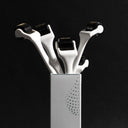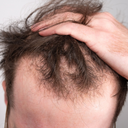Hair loss is a common problem that affects both men and women. As we age, our hair becomes thinner and less dense; for some, it can even lead to baldness.
Fortunately, several options are available to combat hair loss, two of the most popular being Platelet-rich Plasma therapy (PRP) and hair transplants.
In 2023, with advancements in technology and medical procedures, it can be challenging to determine which option is the best for you.
In this article, we will compare and contrast PRP therapy and hair transplants, examining the pros and cons of each to help you make an informed decision about which treatment is right for you.[[textbox]]
Table of content
Summary
Both Platelet-Rich Plasma (PRP) therapy and Follicular Unit Extraction (FUE) hair transplant are compelling options for those seeking to address hair loss.
Each procedure has its own benefits and potential downsides, and the most suitable choice largely depends on the individual's unique hair loss situation, health status, and personal preferences.
An alternative to these treatments, the Scandinavian Biolabs Hair Growth Routine, offers a cost-effective, non-invasive approach that utilizes carefully selected ingredients to nourish hair and support its appearance.
Ultimately, the decision between PRP therapy, hair transplant, or alternative treatments should be made in consultation with a healthcare professional or a hair restoration specialist.
By assessing your specific hair loss pattern, overall health, and personal goals, they can guide you towards the treatment option that best suits your needs and expectations.
[[textbox]]
As your leading source for hair health information over the past 4 years, we never compromise on accuracy. When it comes to your health, you deserve information you can truly rely on - and earning your trust is our top priority.
Here's how Scandinavian Biolabs ensures every piece of content meets the highest standards of accuracy and integrity:
- Credentialed Experts: Our reviewers are actively practicing doctors and medical researchers
- Stringent Reviews: Content undergoes rigorous editing by subject specialists and review by a practicing doctor.
- Evidence-Based: We rely on well-established research from trusted scientific sources like peer-reviewed journals and health authorities.
- Full Transparency: Our editorial standards, writer credentials, reviewer credentials, correction process, and funding are all publicly documented.
- Independent Voice: While we do promote products, we operate in a vacuum to business operations. Our main goal is just an unwavering commitment to providing medically-sound guidance.
You can count on Scandinavian Biolabs to consistently deliver the trustworthy health information you deserve. Read our Editorial Standards.
PRP for hair loss

Platelet-Rich Plasma (PRP) is a medical treatment that uses a patient's own blood to promote healing and regeneration.
It has been used for decades in various medical fields, including orthopedics and dentistry, but it has recently gained popularity as a treatment for hair loss.
The steps involved in the PRP process are described below:
- Initial consultation: The first step in the PRP treatment process is to schedule an initial consultation with a qualified medical professional. During this consultation, the doctor will evaluate your hair loss and overall health to determine if PRP hair treatment is the right option for you.
- Blood draw: If it is determined that PRP is a suitable treatment option, the doctor will begin the PRP process by drawing a small amount of blood from your arm.
- Blood centrifugation: The blood is then placed in a centrifuge machine and spun at high speed to separate the plasma from the other blood components. The resulting plasma is rich in platelets, which contain growth factors that stimulate hair follicle health and hair growth.
- Scalp preparation: Before injecting the PRP, the scalp will be cleaned and numbed to minimize discomfort during the injection process.
- PRP injection: The doctor will then use a fine needle to inject the PRP into the scalp, focusing on areas where hair loss or thinning is most noticeable. The treatment typically takes about 30 minutes, and patients may require multiple sessions to achieve the desired results.
- Post-injection care: Once the PRP has been injected, the doctor may use a special device to massage the scalp and distribute the PRP evenly throughout the treatment area. You will be given instructions on how to care for your scalp after the procedure, which may include avoiding certain hair products or activities for a period of time.
Effectiveness
The effectiveness of PRP for hair loss varies from person to person and depends on several factors, including the severity and underlying cause of the hair loss. It is a form of hair restoration that stimulates hair follicle health and hair growth.
One important thing to keep in mind is that results are not immediate, and it can take time before any noticeable changes in hair growth occur.
In general, patients can expect to see the initial results of PRP treatment about 2 to 4 months after their first treatment session, including increased hair volume.
One of the reasons for the effectiveness of PRP is that it is a minimally invasive procedure performed on an outpatient basis.
There is typically no downtime or recovery period required, and most people can return to their normal activities immediately after the procedure.
Patients considering PRP for hair loss should consult with a qualified medical professional to determine if this treatment is right for them and develop a treatment plan that meets their needs and goals.
Cost
The typical price range for this procedure generally falls between $1,500 and $3,500 for the first three sessions. Subsequent sessions are usually priced at a minimum of $400 each.
These prices can vary considerably depending on the clinic's location and reputation, the medical professional's experience administering the treatment, and the quality of the equipment utilized.
PRP therapy for hair loss is a medical procedure that requires a series of sessions for the best results. It is not a one-time treatment but a series of injections that stimulate and promote hair growth over time.
Usually, these sessions are spaced 4-6 weeks apart to allow the scalp to respond to the treatment.
Therefore, when considering the overall cost, it's important to factor in the cumulative cost of multiple sessions, not just the cost of a single treatment.
Moreover, it's worth noting that maintenance treatments are often necessary to preserve the results achieved through the initial series of PRP therapy.
These maintenance sessions typically occur every 4-6 months, adding to the total cost.
Risks and side effects
PRP hair restoration treatment is often considered a safer alternative to surgical procedures because it utilizes the patient's blood sample, reducing the likelihood of complications associated with introducing foreign substances into the body.
Nonetheless, some minor side effects may still occur, as outlined below:
- Pain and swelling: PRP injections may cause pain and swelling at the injection site, which is usually temporary and can be managed with over-the-counter pain relievers.
- Bleeding and bruising: Since PRP involves drawing blood and injecting it back into the body, there's a risk of bleeding and bruising at the sites where the needle was inserted.
- Allergic reactions: Although rare, some patients may experience an allergic reaction to the substances used during the PRP preparation process, such as anticoagulants or local anesthetics.
- Nerve injury: In rare cases, PRP injections administered close to nerves may cause nerve damage or injury.
- Scar tissue formation: PRP therapy may lead to scar tissue formation, particularly if used in conjunction with other treatments such as surgery.
- Tissue damage: There's a small risk of damage to the surrounding tissues during the PRP injection, although this is generally rare and unlikely to occur if a skilled practitioner performs the procedure.
- Scalp tenderness: PRP hair restoration treatment may cause tenderness in the scalp due to the injection process. This discomfort is generally mild and temporary, subsiding within a few days after treatment.
- Headaches: Some patients may experience mild to moderate headaches following PRP injections.
FUE hair transplant for hair loss

Follicular Unit Extraction (FUE) is a minimally invasive hair transplant technique for treating hair loss.
It involves the extraction of individual hair follicles from a donor area, usually the back or sides of the scalp, and transplanting them to the recipient area where hair is thinning or balding.
Here's how FUE hair transplant works:
- Consultation and planning: A specialist evaluates the patient's hair loss pattern, donor area, and overall hair health to create a personalized treatment plan for the hair transplant.
- Local anesthesia: The donor and recipient areas are numbed using local anesthesia to ensure a comfortable procedure.
- Follicle extraction: Using a specialized punch device, the surgeon extracts individual hair follicles from the donor area, typically 1–4 hairs per follicle. The extracted follicles are then prepared for transplantation.
- Recipient site creation: Tiny incisions, also known as recipient sites, are made in the balding or thinning areas of the scalp. These sites are strategically placed to follow the patient's natural hair growth pattern for a natural-looking result.
- Transplantation: The extracted hair follicles are carefully implanted into the recipient sites. The direction, angle, and depth of the follicles are meticulously considered ensuring optimal hair growth and aesthetics.
- Recovery: The FUE hair transplant procedure leaves tiny, round scars in the donor area that gradually heal and become less noticeable over time. Postoperative care instructions are provided to ensure proper healing and optimal results. Hair growth typically begins around 3–4 months after the procedure, with full results visible after 12–18 months.
Effectiveness
FUE hair transplants are an effective solution to reverse hair loss, with an impressive success rate for qualified candidates.
In fact, FUE hair transplantation often has up to an 80% rate of graft uptake, meaning a high percentage of transplanted follicles successfully integrate into the scalp and grow new hair.
Results typically become more noticeable around the 3 to 4-month mark after the procedure. This treatment is often likened to an insurance policy, as patients pay for the assurance of achieving their desired results.
If the hair transplant doesn't meet expectations, many clinics offer to fix the issue for free or provide credit towards another procedure.
In summary, FUE hair transplants have proven to be effective for many patients, providing natural-looking results with minimal scarring and downtime.
Choosing an experienced hair transplant specialist and discussing all potential risks and expectations before undergoing the procedure is crucial.
Cost
On average, hair transplant procedures in the United States range from $4,000 to $15,000. It's important to note that these costs can be higher or lower depending on individual circumstances and geographical location.
Keep in mind that hair transplantation is typically classified as a cosmetic procedure, which means that most health insurance plans do not cover the associated costs.
Patients should be prepared to pay for the procedure out-of-pocket or explore financing options some clinics offer.
Risks and side effects:
- Infection: As with any surgical procedure, there's also a risk of infection with hair transplants. However, this is quite rare and can be further minimized with the use of antibiotics.
- Swelling: It's common for the scalp to swell after the hair transplant surgery, which can extend down to the eyes and forehead.
- Unnatural appearance: The newly transplanted hair might appear unnatural if the procedure is not performed skillfully. This could mean hair growing in the wrong direction or an obvious difference in density between the transplanted and existing hair.
- Shock loss: This is the temporary loss of the transplanted and some of the healthy hair growth you already had. It's usually not permanent.
- Numbness: Temporary numbness is common post-hair transplant surgery on the operated areas of the scalp.
- Pain: Some patients may experience pain in the scalp following surgery. This is usually manageable with prescribed pain medication.
- Itching: Due to scab formation, there might be severe itching. This is normal but excessive scratching can lead to scarring and dislodging of the transplanted grafts.
- Cysts: Small cysts can develop where hair is being transplanted, also known as the recipient areas, but they usually disappear by themselves after some time.
Read this: The 12 Best Natural and Drug Hair Transplant Alternatives
An affordable and effective alternative to PRP and hair transplant

The Scandinavian Biolabs Hair Growth Routine has emerged as a potent and affordable alternative to PRP and hair transplant procedures, which can be both expensive and invasive.
This innovative solution incorporates a 3-step system, meticulously crafted to nourish hair strands and enhance the appearance of hair thickness, for those seeking healthier-looking hair.
Key ingredients include Capilia Longa, which is known for its nourishing properties and its potential to improve the appearance of hair thickness.
Niacinamide boosts scalp blood flow and protects follicles from oxidative stress, while Aloe Vera soothes the scalp, improving hair strength and texture.
The routine also boasts an Amino Acid Complex for supporting hair shaft integrity and Vanillyl Butyl Ether which increases scalp blood flow for better nutrient and oxygen delivery to hair follicles.
Lastly, it contains Zinc PCA for regulating sebum without skin irritation.
The Scandinavian Biolabs Hair Growth Routine combines these potent ingredients to provide a plant-powered and affordable approach to hair loss treatment designed to trigger hair growth naturally.
PRP vs hair transplant: Key differences
There are many significant differences between these procedures for hair loss. Let’s have a look at some of them here:
|
PRP |
Hair Transplant |
|
|
Treatment Procedure |
Involves injecting the patient's own plasma, enriched with platelets, into the scalp to stimulate hair growth. Non-surgical and relatively quick procedure. |
Involves surgically removing hair follicles from a part of the scalp or body where hair is more resistant to balding, and transplanting them to the balding area. More invasive and time-consuming. |
|
Recovery Time |
Minimal. Patients can typically resume their normal activities immediately after the procedure. |
Longer recovery period required. Patients may need to take time off work and refrain from strenuous physical activity for a week or more. |
|
Effectiveness and Results |
Stimulates hair growth, making existing hair look fuller and healthier. Cannot create new hair follicles. |
Physically moves hair follicles to balding areas. Can fill in bald spots with the patient's natural hair, providing more dramatic and permanent results. |
|
Suitability |
Suitable for early stages of hair loss and for both men and women. Can be used in conjunction with other treatments. |
Usually recommended for individuals with significant hair loss where there is enough donor hair available for transplantation. Typically more effective in men due to the pattern of male baldness. |
|
Cost |
Typically costs around $1,500-$3,500 for the first three treatment sessions, with subsequent sessions costing around $400 each. |
Hair transplant surgery costs can vary significantly but are generally in the range of $4,000-$15,000 depending on the extent of hair loss and the number of grafts needed. |
Treatment procedure
PRP, or Platelet-Rich Plasma therapy, involves injecting the patient's own plasma, enriched with platelets, into the scalp to stimulate hair growth. The process is relatively quick and non-surgical.
On the other hand, hair transplants involve surgically removing hair follicles from a part of the scalp (or body) where hair is more resistant to balding and transplanting them to the balding area. This procedure is more invasive and takes several hours to complete.
Recovery time
The recovery time after PRP is minimal. Patients can typically resume their normal activities immediately after the procedure.
Hair transplant surgery, however, requires a longer recovery period. Patients may need to take time off work and refrain from strenuous physical activity for a week or more.
Effectiveness and results
PRP can help stimulate hair growth, making existing hair look fuller and healthier. However, it cannot create new hair follicles.
Hair transplants physically move hair follicles to balding areas. This procedure can fill in bald spots with the patient's natural hair, providing more dramatic and permanent results.
Suitability
PRP therapy can be used in the early stages of hair loss and is suitable for both men and women. It can also be used in conjunction with other treatments.
Hair transplant surgery is usually recommended for individuals with significant hair loss where there is enough donor hair available for transplantation. It's typically more effective in men due to male pattern baldness.
Cost
PRP therapy is typically less expensive, usually costing between $1,500-$3,500 for the first three sessions and around $400 for each subsequent session.
However, it often requires multiple sessions and periodic maintenance treatments.
Hair transplant surgery, while more costly, with prices ranging from $4,000 to $15,000 or more, is usually a one-time procedure.
The cost depends on the extent of hair loss and the number of grafts needed. Extra costs may apply for post-operative care and follow-up sessions.
PRP vs hair transplant: which one is better?

PRP therapy might be more suitable for those in the early stages of hair loss or for women with diffuse hair loss, as it stimulates hair growth and slows hair loss. FUE hair transplant, conversely, is often more effective for those with significant hair loss and a healthy donor area, as it involves transplanting hair from one part of the scalp to another.
Choosing between Platelet-Rich Plasma (PRP) therapy and a Follicular Unit Extraction (FUE) hair transplant depends largely on the individual's stage of hair loss, the pattern of hair loss, and personal preferences.
Both treatments are non-surgical and have varying results. Consultation with a hair restoration specialist is crucial to determine the best approach for each individual case.
Should I do PRP before a hair transplant?

The decision to undergo Platelet-Rich Plasma (PRP) therapy before a hair transplant can depend on several factors and should ideally be discussed with a hair restoration specialist. PRP therapy uses your own blood platelets to stimulate hair growth, reduce hair loss, and potentially improve the quality and texture of your existing hair. This can make the scalp healthier and better prepared for a future hair transplant.
Furthermore, PRP therapy might also help strengthen non-transplanted hair, reduce shedding, and potentially enhance the survival and growth of the hair grafts after transplantation.
Some doctors recommend PRP before, during, and after a hair transplant to maximize the benefits.
However, it's important to note that everyone's hair loss situation is unique. While PRP might benefit some, it might not be necessary for others.
Therefore, a consultation with a specialist will help determine the best course of action for you based on your specific needs, the extent and pattern of your hair loss, and your overall health.
Does PRP actually help with hair transplants?

Yes, Platelet-Rich Plasma (PRP) therapy can indeed be a beneficial adjunct to hair transplant procedures. PRP is believed to promote healing and enhance the growth of the transplanted follicles, thereby potentially increasing the success of the transplant. It also helps to strengthen and improve the health of existing hair, which can contribute to a fuller appearance.
Moreover, some experts suggest that incorporating PRP into the hair transplant process may improve graft survival rates, stimulate faster hair growth in transplanted follicles, and reduce the shedding of transplanted hair.
However, results can vary significantly from person to person, and not all individuals may experience the same benefits.
It is also important to remember that while PRP can be a useful addition to a hair transplant procedure, it is not a standalone cure for hair loss.
Conclusion
Both Platelet-Rich Plasma (PRP) therapy and Follicular Unit Extraction (FUE) hair transplant are compelling options for those seeking to address hair loss.
Each procedure has its own benefits and potential downsides, and the most suitable choice largely depends on the individual's unique hair loss situation, health status, and personal preferences.
An alternative to these treatments, the Scandinavian Biolabs Hair Growth Routine, offers a cost-effective, non-invasive solution that harnesses the power of scientifically-backed ingredients to stimulate hair growth and maintain hair health.
Ultimately, the decision between PRP therapy, hair transplant, or alternative treatments should be made in consultation with a healthcare professional or a hair restoration specialist.
By assessing your specific hair loss pattern, overall health, and personal goals, they can guide you towards the treatment option that best suits your needs and expectations.
References:
Read more:
- 19 Best & Proven Shampoos For Hair Thinning In 2023
- 29 Ways To Get Rid Of Oily Hair (2023)






